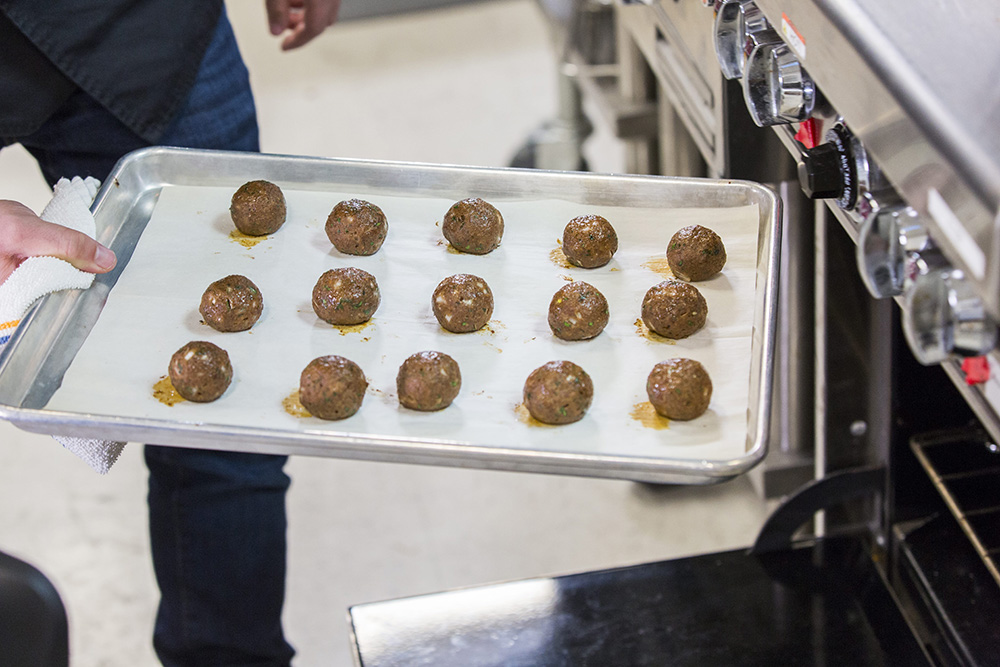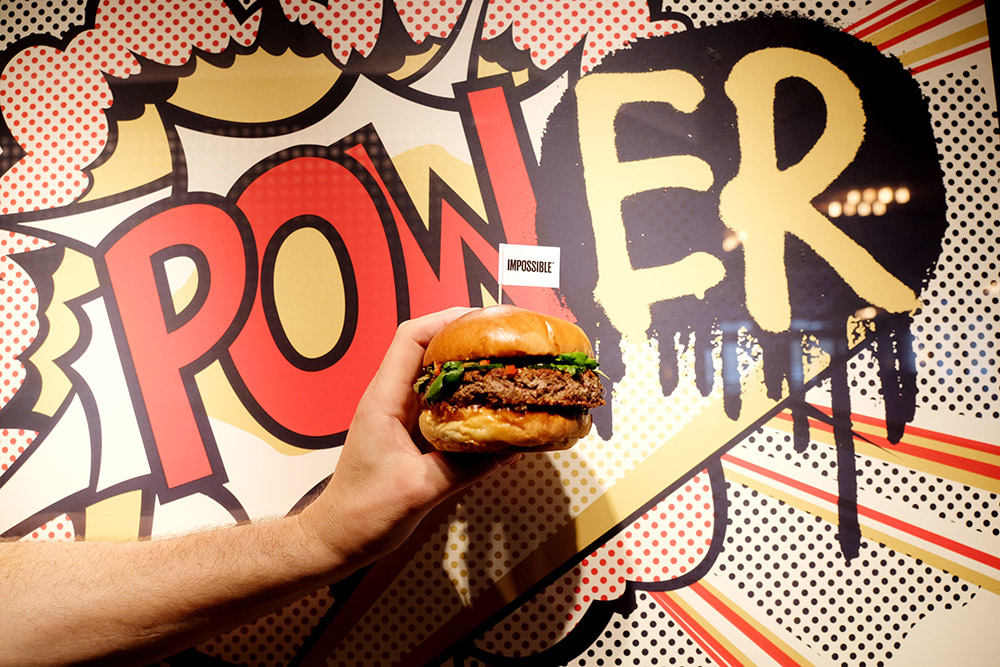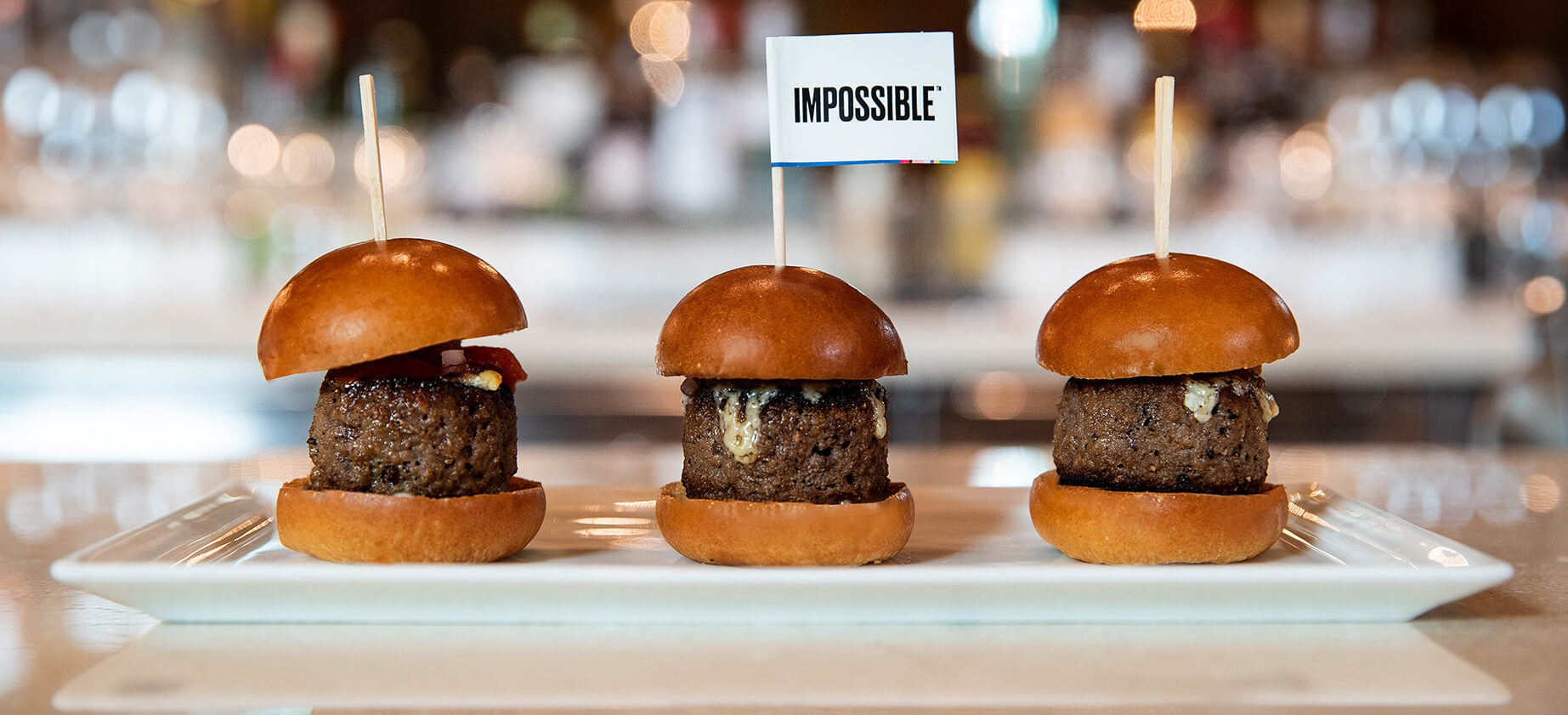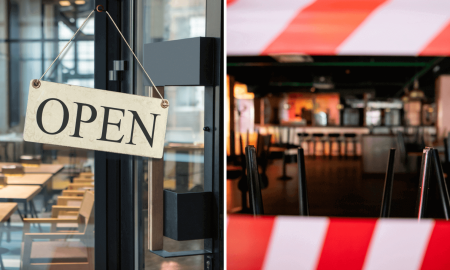For many years, fast food restaurants thought of veggie burgers as a necessary evil, and could hardly be bothered to come up with a high-quality product; as a result, they were unpopular even among those trying to avoid animal products. Then Beyond Meat came along and completely redefined what meatless eating meant. All of a sudden, Americans are totally into plant burgers, and European supermarkets can barely keep them in stock. So what happened?

Image: Impossible Foods
Growing up in New England, Ethan Brown spent his summer vacations working the small farm belonging to his father, a renowned philosophy professor specializing in environmental protection and climate change. Seeing the process by which meat went from animal to supermarket shelf changed his perspective on food. Later, Brown studied politics and worked in the cleantech sector, developing technology related to environmental protection. By the mid-2000s, he was sick of seeing how much ignorance the world showed toward climate change, and decided to roll up his own sleeves and do something about it.
Don’t imitate, exceed
Brown founded the startup Beyond Meat. The idea behind his business was That, if people didn’t want to give up meat, someone had to come up with a way to produce it that wouldn’t harm animals or the environment. In other words, they had to produce meat without using meat. Paradox, you say? At first glance, sure, but when you think about it, meat is really just made up of four components: protein, fat, trace elements, and water. All of those can be found in the plant world, so Beyond Meat set about creating a burger that was expressly NOT designed to imitate meat – the goal was to make something even better than meat, something that even hard-core carnivores would go for. That’s obviously a pretty ambitious goal, but considering how rapidly the fake meat industry has developed both financially and technologically in the past few years, it’s not all that unrealistic.
The meatless revolution
Beyond Meat’s recipe for success: a pea protein base, beet extract to give it that red “beef” color, and coconut oil and potato starch for texture and juiciness. Other ingredients include canola oil, rice protein, mung bean protein, natural flavors, methylcellulose, apple extract, salt, potassium chloride, vinegar, lemon juice concentrate, sunflower lecithin, and pomegranate powder. All together, they create a vegan burger patty that looks – and tastes! – deceptively realistic. According to Beyond Meat, the patties have 20 grams of protein (even more than their beef counterparts), contain no gluten or soy, and are GMO-free.

Image: Impossible Foods
Bill Gates and stock market hype
The University of Michigan conducted a study to determine whether Beyond Meat burgers were really as eco-friendly as they claimed. The result: compared to a beef patty of the same size, Beyond Meat patties consume 99 percent less water, 93 percent less land, and 46 percent less energy, and cause 90 percent less greenhouse gases. Or, as Markus Thaller, Meat & Sausage Category Manager at Metro Germany, puts it: “Its success in the USA shows that it’s a truly revolutionary product.” Fake meat products really do seem to have enormous economic potential.
At the beginning of May, Beyond Meat had a truly impressive initial public offering on the New York Stock Exchange – in fact, it was America’s most successful IPO in 19 years. In one morning, the stock went up 163 percent, from $25 to $60 a share. Part of the stock’s success was due to the enthusiasm of well-known investors like Bill Gates, Leonardo DiCaprio, and Twitter founders Evan Williams and Biz Stone. Customers seem equally excited about the product – according to Beyond Meat, they’re already outselling beef burgers in Southern California supermarkets – and now they’ve made the leap across the Atlantic as well.
German discount chain Lidl began stocking Beyond Meat burgers in late May, and many stores were completely sold out within a month. In early July, brand-name discount chain Netto did a limited-time sale, offering two Beyond Meat
burger patties for €4.99.
Beyond Meat hasn’t hit Austrian supermarket shelves yet, but Metro has been selling it since the beginning of March (German locations began stocking it in November 2018). As Fabio Ziemßen, Director of Food Innovation at Metro Innovation Hub, puts it, “We urgently need alternatives to factory-farmed animal products so that we can cut back on our resource consumption. In light of that, Beyond Meat is a product that fits the spirit of the times, and helps us in our quest to optimize our existing food system.”

Image: Impossible Foods
The race to meat without meat
Not that the competition is asleep at their desks or anything. Impossible Foods is another rising star in the fake food industry, and its breakthrough product is the Impossible Burger. The recipe differs only slightly to that of the Beyond Meat burger, except that the Impossible Burger is based on soy protein. One additional difference is that the Impossible Burger actually “bleeds” thanks to heme, a substance found in soybean roots. Heme is similar to the muscular protein myoglobin, which gives meat its characteristic flavor and color – so many people think it’s the key to perfect fake meat. Researchers at Impossible Foods obtain heme through fermentation. They spent five years tinkering with the Impossible Burger recipe, and put 80 billion dollars into product development.
The mind behind Impossible Foods is Stanford biochemistry professor Patrick O. Brown (no relation to Ethan Brown), who has been battling against factory farming for years. Brown founded Impossible Foods in 2011 as a way of attacking the roots of the meat industry: consumers’ appetites for meat. In October 2018, Air New Zealand became the first airline to add Impossible Burgers to their menus; the meatless patties are now available on business class flights between Auckland and San Francisco. Impossible Foods’ partnership with Burger King has also helped the company gain ground on its competition.

Image: Impossible Foods
Now discount chain Aldi wants a piece of the action as well – the company announced plans to roll out its own fake-meat product, Wonder Burger, in August as a lower-cost alternative to Beyond Meat. Like the Impossible Burger, the Wonder Burger is based on soy protein. Interestingly, it will be manufactured by Ponnath Die Meistermetzger GmbH in the Upper Palatinate, which is also where Aldi gets its meat products. It’s quite telling, though, that even the meat industry is getting on the meatless bandwagon. Tyson, the largest meat manufacturing company in the USA, is investing heavily in meatless alternatives, as is the Swiss corporation Bell.
In fact, two of the biggest names in the international food industry – McDonald’s and Nestlé – have picked up on the meatless trend, and they’re even doing it together. Nestlé subsidiary Garden Gourmet is already offering meatless products in German, Dutch, and Swedish supermarkets, and in April of this year, the fast food giant began serving up its soy- and wheat gluten-based Incredible Burgers. In fact, Nestlé’s already started working on its second plant patty: this fall, the Nestlé subsidiary Sweet Earth will start making its Awesome Burger available to American retailers, restaurants, and university cafeterias. That announcement has stopped Beyond Meat stock’s meteoric ascent for the time being.
Now even Amazon is getting in on the hype. The online superpower owns Whole Foods, an American organic supermarket chain that recently struck a deal with Meatless Farm, a British fake-meat manufacturer. Whole Foods will be selling Meatless Farm products in the US for six months, thus cutting directly into Beyond Meat’s customer base. Beyond Meat isn’t likely to throw in the towel just yet, though, having recently reported Q2 2019 earnings of $67.3 billion – a 287% increase over last year.
Fake eggs and fishless fish
The Next Big Thing is already on the horizon. Logically, if you can imitate meat, you can imitate any other food product that’s bad for the environment. Sure enough, fake eggs and fishless fish are picking up steam: Just Egg is already enjoying huge success in Canada with its plant-based egg substitutes, and Gathered Foods and Good Catch have already brought fake tuna onto the market. Now Impossible Foods is tinkering with a formula for fishless fish; by 2035, it hopes to have developed substitutes for all animal products.
The market justifies the producers’ lofty ambitions, as the fake meat example demonstrates. According to German market research institute Statista, market volume for fake meat is expected to increase 40 percent by 2023, reaching 6.4 billion dollars. Analysts estimate that, by 2040, 60 percent of all “meat” products will come either from plants or a laboratory. So the race to the best fake meat is far from over – and fake food in general is just getting started.
More about plant based meat:
The business case for plant-based burgers
Taste-testing alternative-protein burgers

















Pingback: The meat of the matter | KTCHNrebel